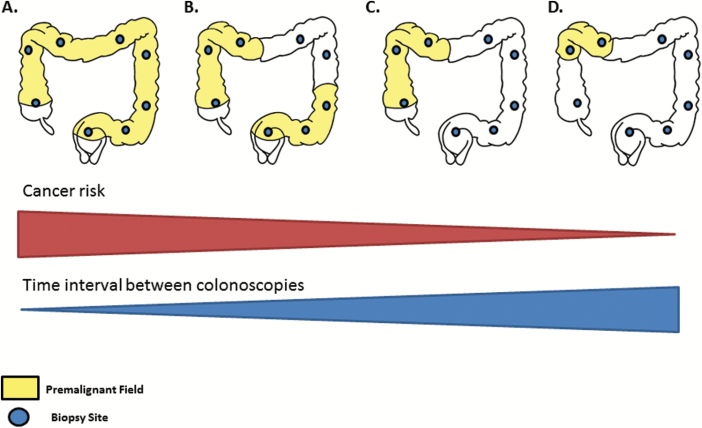Figure 2.
Implications of the field effect on UC colonoscopic surveillance. By analyzing several screening biopsies procured along the colon, field effects can be identified and could possibly be used to predict cancer progression risk. The colon diagrams represent four clinical scenarios in which dysplasia may not be detected by chromoendoscopy but in which screening biopsies could identify molecular fields: (A) pancolonic field, (B) multifocal fields, (C) extensive field and (D) localized field. Cancer is a probabilistic process that depends on the rate of mutation and the number of cells at risk. Thus, we postulate that large, multifocal fields are likely to be associated with higher risk of cancer progression compared to small, unifocal fields. Studies with large numbers of patients are needed to validate this model, quantify the progression risk accordingly, and integrate it with other known cancer risk factors in UC. If such approach was developed, it would facilitate tailoring the time interval between colonoscopies to the level of risk for each patient.

